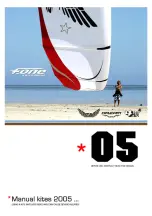
Document: SLSA-MIP-5-4-0-US
Date of Issue: 05/2016
Revision: -
15-11
Application of smoothing layer
After preparation of mixture (for material recommendation see Tab. 15-3) and its eventual
thickening to enhance the non-curtaining capability (for vertical or lower areas) is performed
its application onto the repair area by means of a plastic spatula. For better distribution of
deposited material on irregular surface it is possible to form it through the laid PE or PP
transparent polyethylene. After proper application the layer is without bubbles. Deposit
thickness is given by necessary thickness of surrounding layers (leveling) and ranges from
0.2 to 12.7 mm (0.008 to 0.5 in) in one deposit.
manufacturer,
name
type
mixing
ratio
delay
rate of
setting
time of
setting
temperature
fillers
MGS,
A: L285
B: Hardener 285
epoxy
A:B
100:40
to be
processed
within 50
min (for 0.2
kg
(0.44lbs)
mixture)
40%
16hours
(32hours)
20-
35°C 68-95°F
(17-
20°C) (62-68°F)
thickening:
Aerosil,
microballs
100%
26hours
(72hours)
(2hours)
20-
35°C 68-95°F
(17-
20°C) (62-68°F)
(80°C) (176°F)
Tab. 15-3
Recommended materials for mixture preparation for application of leveling layer
Sanding
Sanding or eventually sealing the surface is made after setting the mixture and possible
tearing of the used polyethylene. It is suitable to start sanding with grain size up to 160 and
finish with grain size of at least 400. It is carried out by dry sanding equipment with suction
from the sanding area. Al203 or equivalent (fused corundum) can be used as sanding
material. Basic material of the part must not be diminished at sanding.
NOTE
Especially in case of C/K (carbon/Kevlar) stiffener in the basic part, sanding through up to
the stiffener must not occur (complication - see note about preparatory sanding at medium
damage).
Finishing
15.5.3.2
Medium damage
Repair of damage by replacing the stiffener part, by mastic and varnish repair. At such repair
it is necessary to distinguish type of used stiffener (especially for sanding):
/K (carbon/Kevlar), rovings of fabric of black color (C) take turns with yellowish (K)
G (glass), rovings from milky white to transparent
Preparatory sanding
For good adhesion of repair layers it is necessary to do sanding up to the depth of damage.
It is necessary to do surface sanding from the damage area with overrun at the least 25 mm
(1 in) for every damaged stiffener layer smoothly up to the top layer and then about 51 mm
(2 in) for finishing and mastic application. It is convenient to do sanding with sanding material
having grain size of 160. It is carried out by dry sanding equipment with suction from sanding
area. Al203 or equivalent (fused corundum) can be used as sanding material.
NOTE
In case of C/K stiffener K rovings tend to rise up from the surface at sanding - it is difficult to
sand them, we recommend to use diamond sanding tool and one-way sanding.
Summary of Contents for S-LSA
Page 2: ......











































